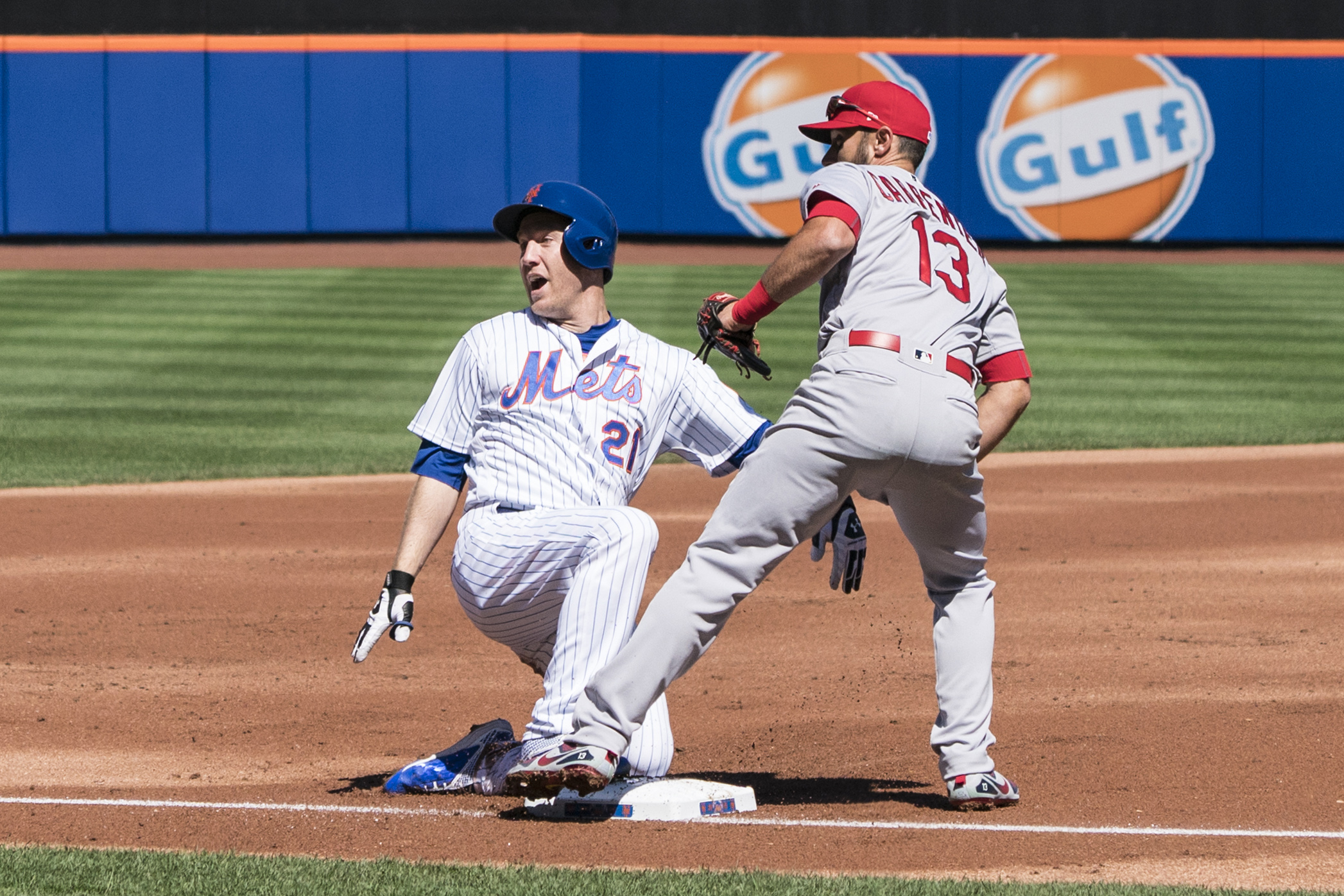Statistics accurate through April 23 games
The day before the Mets began their 2018 campaign, first base coach Ruben Amaro Jr. told Newsday of the team’s plan to improve upon a skill that eluded them during 2017: smart baserunning. “You don’t have to have great speed to be a great baserunner,” he explained, and – save for Robert Gsellman’s proclamation that he is fastest amongst the pitching staff – few players would openly lay claim to the first half of that equation. Of Baseball Prospectus’ main baserunning metrics – ground advancement runs (GAR), stolen base runs (SBR), air advancement runs (AAR), hit advancement runs (HAR), other advancement runs (OAR) and baserunning runs (BRR) – they ranked 7th, 30th, 25th, 26th, 21st and 24th, respectively. Changes needed to be made, and those that have been were on display in the eighth inning of Saturday’s game versus Atlanta.
After the bases were loaded by the first three batters and Yoenis Cespedes struck out, National League batting average leader Asdrubal Cabrera came to the plate. Atlanta’s Shane Carle threw two nearly identical changeups, Cabrera connecting on the second for a two-RBI single. The first run scored, Wilmer Flores, was unremarkable – on a clear hit into the outfield, the man on third could walk in and score. The second, however, was Jose Reyes, whose ability to score as shown in the video below speaks to one of the changes manager Mickey Callaway spoke about to Newsday: “When you’re talking about 60 feet, a step and a half makes a big difference.”
Reyes’ reaction to Cabrera’s single was only briefly shown, but what is clear is that his path home started farther off second base than normal, providing him with the head start needed to reach the plate even if a clean throw was made. On the opposite end of things, the next at-bat reflected the skill of restraint.
Unlike Cabrera’s no-doubt single, Jay Bruce’s hit to left field had the early trajectory that suggested it would be caught. When Michael Conforto, then on second, was shown in the video, he, like Reyes, was farther off second, but visibly hesitated before taking off to make sure the ball was in play. Another poor play in the outfield allowed Bruce to make it, barely, into second. This extra base taken was not an anomaly – after a season in which the Mets were tied for 26th in Baseball-Reference’s extra bases taken percentage (XBT%), they’re currently tied for fourth at 50%. This is a percentage earned by superior awareness, not just natural speed, and Bruce himself seemed to presage this moment, explaining “[Baserunning is] anticipating, it’s thinking, it’s paying attention.”
How have these improvements played out in the metrics? While we’re still in the small sample-size section of the season and teams that put up positive BRR numbers last year would be in many cases simply unable to reach them by this point, we can see who has improved out of the teams that ended last year with negative BRR. Finding the net change between 2017 and 2018, nine teams that were negative last year so far have positive BRR, the Mets among them. The two largest changes belong to Detroit and Philadelphia, who have swung 12.6 and 13.3 points respectively, though the changes in Queens have come without major differences in the lineup nor many young players who are in the stages of rapid growth. So they’re still behind Philadelphia in terms of impressiveness – the Phillies have gone from 27th to 1st in BRR over this time – but the Mets’ jump from 24th to fourth is evidence of a preseason goal being achieved.
Where they still lack is in stolen base prowess. Ranking 28th this year in SBR with a number already in the “poor” realm, 25th in stolen bases and tied for 26th in stolen base percentage, a February Call to the Pen article said it all in the title: “New York Mets still don’t seem to see the value of stealing bases.” With a division-leading start, major structural changes are probably not in the cards, and of BP’s top 10 prospects with major league ETAs of 2018 or already debuted, their quickness around the bases is not touted as a beneficial part of a call-up. Instead, the team’s best option, save for an in-contention trade at the deadline, seems to be to proceed as is, focusing on the minutia inherent in taking extra bases as a part of live plays, not the act of the steal being a play in and of itself.
Photo credit: Gregory J. Fisher – USA Today Sports
